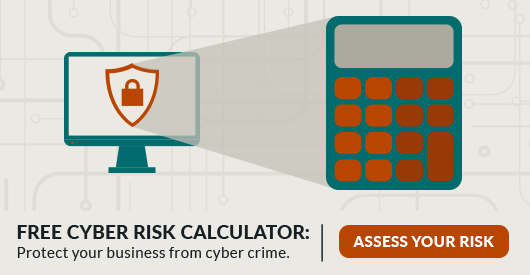 To celebrate ladder safety month, now is the time to 1) review your ladder safety program, 2) conduct ladder safety training, and 3) test your ladder safety knowledge. The following outline provides an overview of using ladders properly.
To celebrate ladder safety month, now is the time to 1) review your ladder safety program, 2) conduct ladder safety training, and 3) test your ladder safety knowledge. The following outline provides an overview of using ladders properly.
Climbing Position
- Climb a ladder by holding on to the rails and not the steps.
- Climb facing the ladder with your body centered between the rails.
- Use three points of contact, with at least three extremities attached to the ladder at all times.
- Do not twist your body while climbing.
Lifting Items
- Do not climb with hands full of gear.
- Put any materials you need to take up a ladder into a tool bag/belt that you wear on your person.
- Use hand lines, hoists, or manlifts to lift and lower heavy objects.
Protective Gear
- Fall protection must be worn based on the hazard assessment if you are working on scaffolding or on the roof of the building.
- Footwear with good support, non-slip soles, and free of mud, oil, and any other slippery debris is required when working on a ladder.
- Safety glasses or hardhats may be required for overhead work.
Stepladder Guidelines
- Never stand on the top two steps.
- Fully open step ladders. Never use a stepladder in a partially-closed position.
- Ladders must have a spreader or locking device. Open and lock cross spreaders.
- Stepladders must not exceed 20 feet in height.
Other Guidelines
- Do not use ladders as a work platform.
- Keep the area around the bottom and top of the ladder free of debris.
- Allow only one person on a ladder at a time.
- Do not move or extend the ladder while occupied (i.e., no ladder jumping).
- Check the ladder for damage and defects before use. If damaged or defective, immediately remove the ladder from service and get rid of it.
- Get help when moving large ladders or working on uneven terrain.
For additional informtion, the American Ladder Institute (ALI) provides no cost ladder safety training for the workplace that aligns with OSHA's general industry ladder requirements. Click here to learn more about their program.

 For the 2nd year in a row, R&R Insurance has been ranked the "Top Bonding and Insurance Firm" by The Daily Reporter readers!
For the 2nd year in a row, R&R Insurance has been ranked the "Top Bonding and Insurance Firm" by The Daily Reporter readers!  Large or small, all businesses are a target for cyber-attacks. Whether it’s a fraudulent email being sent from someone disguised as the COO, or an intercepted wire transfer - businesses must continue to be diligent in preventing these situations from occurring within their four walls.
Large or small, all businesses are a target for cyber-attacks. Whether it’s a fraudulent email being sent from someone disguised as the COO, or an intercepted wire transfer - businesses must continue to be diligent in preventing these situations from occurring within their four walls.

 A consistent challenge for majority of businesses is how to effectively attract and retain employees. With millennials making up the majority of the workforce, businesses must alter their tactics in order to stay ahead.
A consistent challenge for majority of businesses is how to effectively attract and retain employees. With millennials making up the majority of the workforce, businesses must alter their tactics in order to stay ahead. Caution is often the reaction I get when discussing Cyber Insurance to construction executives in Wisconsin. From their perspective it would be a nice policy to have should the North Koreans focus their slave hacking force on a plumber in Sheboygan. The resulting ransom of 200 bitcoin for their $200 laptop seems a laughable prospect to a field that generally isn’t tech reliant. The truth, however, is that contractors are a growing target for hackers, but fear isn’t the only reason for a contractor to have Cyber Insurance.
Caution is often the reaction I get when discussing Cyber Insurance to construction executives in Wisconsin. From their perspective it would be a nice policy to have should the North Koreans focus their slave hacking force on a plumber in Sheboygan. The resulting ransom of 200 bitcoin for their $200 laptop seems a laughable prospect to a field that generally isn’t tech reliant. The truth, however, is that contractors are a growing target for hackers, but fear isn’t the only reason for a contractor to have Cyber Insurance. Many employee benefits are subject to annual dollar limits that are periodically updated for inflation, such as HSAs, health FSAs, and transportation fringe benefit plans.
Many employee benefits are subject to annual dollar limits that are periodically updated for inflation, such as HSAs, health FSAs, and transportation fringe benefit plans.  Effective October 16, 2018, OSHA launched a "Site-Specific Targeting (SST) inspection program". The goal of the program is to ensure that employers provide safe and healthful workplaces by directing enforcement resources to those workplaces with the highest rates of injuries and illness.
Effective October 16, 2018, OSHA launched a "Site-Specific Targeting (SST) inspection program". The goal of the program is to ensure that employers provide safe and healthful workplaces by directing enforcement resources to those workplaces with the highest rates of injuries and illness.  Whether we're ready for it or not, winter weather is upon us. And with colder temps comes an obvious increase in the use of fireplaces. For many of us, our fireplaces/chimneys haven't been touched in months. However, c
Whether we're ready for it or not, winter weather is upon us. And with colder temps comes an obvious increase in the use of fireplaces. For many of us, our fireplaces/chimneys haven't been touched in months. However, c
